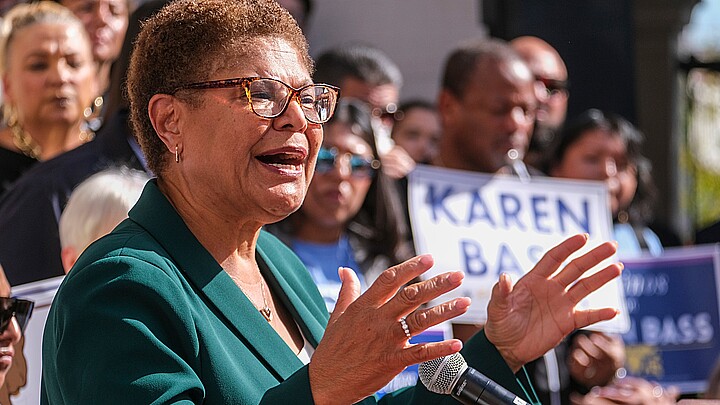Politics
California proposes rollback of solar incentives, fee increases
In the latest rift in the state’s ongoing debate over rooftop solar, California’s utility officials have proposed to reduce the value of excess energy sold back to the grid for thousands of homeowners
December 14, 2021 6:28pm
Updated: December 15, 2021 8:48am
In the latest rift in the state’s ongoing debate over rooftop solar, California’s utility officials have proposed to reduce the value of excess energy sold back to the grid for thousands of homeowners.
The California Public Utilities Commission (CPUC) released a proposal on Monday to make changes to a popular Net Energy Metering (NEM) program, which enabled about 1.3 million customers to install rooftop solar systems and reduced demand on the electric grid by up to 25% during midday.
Under the program, Californians who utilized solar could receive a financial credit on their bill for any excess energy they sold back to the utility grid. The program applied to and incentivized customers in Pacific Gas & Electric Company, Southern California Edison and San Diego Gas & Electric Company territories.
The CPUC’s proposal unveiled Monday, however, would revise the amount of credit customers receive for selling back solar to the grid. Under the CPUC’s proposal, customers could see their credit significantly reduced – up to 50% for PG&E customers, according to the Sacramento Bee.
The proposal also seeks to implement fixed monthly charges of between $22-$40 for customers with solar, with rates varying depending on utility provider.
The proposal sparked outrage from advocates of solar energy, who said the decision would “tarnish the state’s clean energy legacy” and “deter many Californians from installing rooftop solar,” leaving the state’s utility grid susceptible to blackouts and power outages. Advocates also feared the proposal would de-incentivize solar for low-income and middle-income households, who make up about 40% of all rooftop solar installations across the state, according to the Solar Energy Industries Association (SEIA).
“Only the wealthiest Californians will be able to afford rooftop solar, shutting out schools, small businesses and the average family from our clean energy future,” Abigail Ross Hopper, president and CEO of the SEIA, said in a statement Monday. “The only winners today are the utilities, which will make more profits at the expense of their ratepayers.
“We urge Governor Newsom to act quickly to change this decision – at risk are 65,000 solar jobs, the security of our electricity grid, and the health of California residents and our planet.”
The CPUC, however, said Monday that reforming the NEM program will move the state closer to its clean energy goals, putting the state on a path to achieve 90-96% decarbonized electricity for all residents by 2045.
The commission is promoting reform to the system after an independent review found that the program’s “costs substantially exceed its benefits.”
According to the CPUC, customers who participate in the NEM program only pay about 9-18% of utility distributors’ costs to serve them, leaving customers who do not participate in the program paying a larger share for service. The latest estimates suggest that Californians spend about $3 billion a year to support NEM programs, the CPUC said.
The proposal would have a significant impact on many low-income residents without NEM systems who end up paying between $67 to $128 more per year because of the NEM program, according to the CPUC. Without reforming the program, CPUC said rates will likely “increase substantially” by 2030.
The earliest the commission could vote on this proposal is during a meeting Jan. 27, where they will also consider the establishment of a new “Equity Fund” under the current proposal.
According to the CPUC, the Equity Fund would allocate up to $600 million for clean energy and storage programs for low-income residents. The program would also exempt some low-income customers, including those who live in “disadvantaged communities and tribal households” from paying a Grid Participation Charge.










